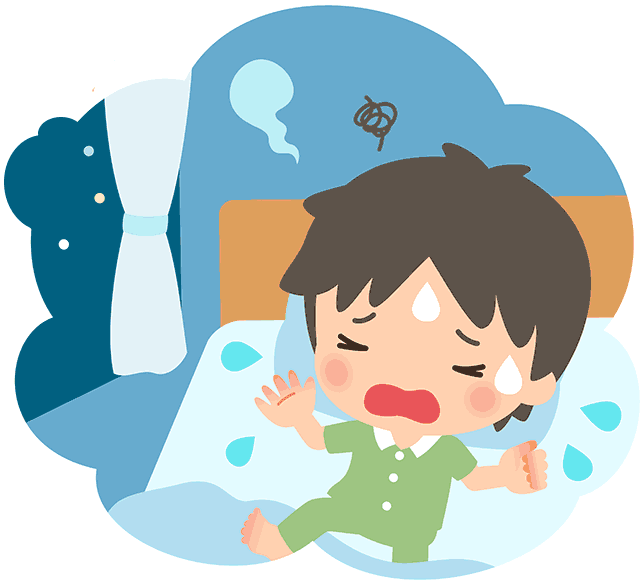Infant Sleep Disturbance
Identifying and Managing Baby Insomnia
Rooting out and diagnosing insomnia in infants, babies, and toddlers is difficult at best. The sleep/wake cycle is very different from that of an adult and differences even exist between newborns and toddlers.

Infant, Baby and Toddler Sleep Cycles:
- Infants experience short sleep cycles about an hour long between light and deep sleep. In between this light and deep period sounds, movement, and hunger can intervene and wake your baby. Some infants can sleep for longer periods than others, but it depends.
- Babies between the ages of 3 months and 1 year sleep much more than adults—up to 12 hours during the night and they frequently require naps.
- Toddlers ages 1 to 3 years sleep up to 14 hours and usually have a nap.
Normal v. Unusual Sleep Behavior Small Children
All small children from infancy to toddlers will determine their own sleep habits if allowed to. Parents are ultimately responsible for forming good sleep hygiene even in a newborn. Babies and toddlers are very sensitive to stimulation, easily excitable and can have a problem relaxing and calming themselves down.
Infant Sleep Disturbance (ISD)
ISD is characterized by babies and toddlers that wake up usually crying unable to return to sleep until they are picked up and held. According to pediatricians the problem is rather widespread.
For infants waking up frequently is natural and encouraged to an extent. Newborns are not working according to our Circadian Rhythm, but parents can help them to an extent. Remember, even small sounds during the transition from light to deeper sleep can wake an infant. Quiet rooms and dim lights, possibly light music in the background may help. Getting your infant accustomed to a bedtime routine is helpful even as a newborn.
Treating Infant Insomnia and Sleep Disturbance in Babies
Most doctors say that babies require some of the same sleep hygiene as adults:
- Create a wind-down time, a period during which the lights dim, the TV is turned low or off and the house is quiet;
- Establish a regular bedtime
- Establish as regular a feeding schedule as possible; for toddlers eliminate any stimulants in cookies candy and other drink or food items that could interfere with sleep.
- Talk to your pediatrician immediately if sleep in a small child is very disturbed and without resolution.
Ferber Method
In 1985 Dr. Richard Ferber wrote the book, “Solve Your Child’s Sleep Problems,” in which he outlined a structured and scientific method for guiding your small child to a natural sleep cycle. Ferber’s method, still widely used today, contends that within a week of applying his “progressive waiting” methods (essentially allowing your child to cry for longer intervals of time before you intervene) you nurture the child’s mastery of his own sleep cycle—essentially the child learns to go to sleep and wake up all on his own and according to an established and routine sleep schedule, which you establish from the outset. The Ferber Method literally takes sleep hygiene concepts and applies them to babies.
